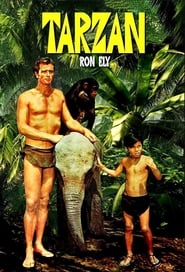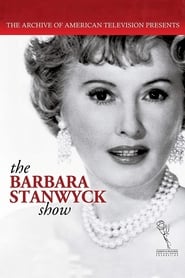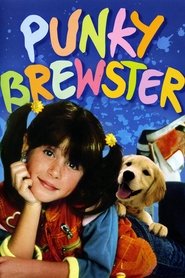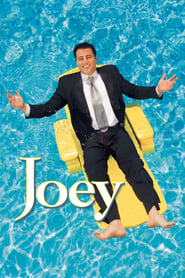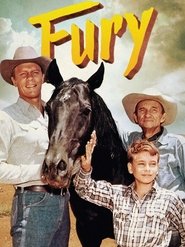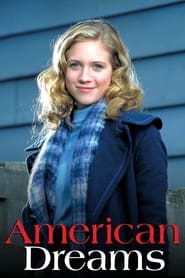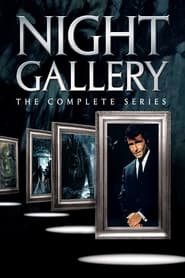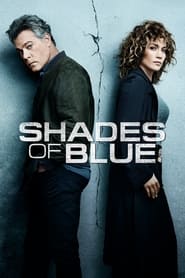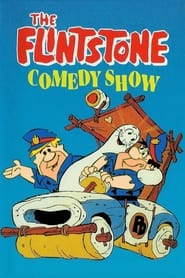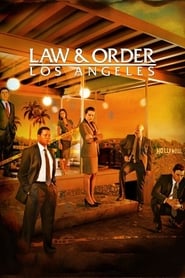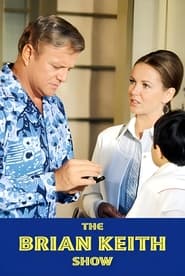Nbc TV Series - Page 12
-
The Joey Bishop Show
1961
star 5.8The Joey Bishop Show is an American sitcom starring entertainer Joey Bishop. The series premiered in September 1961 on NBC where it aired for three seasons. The series then moved to CBS for its final season. Executive produced by Danny Thomas, The Joey Bishop Show is a spin-off of Thomas' series The Danny Thomas Show. -
Good Morning, Miami
2002
star 6.7A talented young TV producer arrives in Miami to revamp the lowest-rated morning show in the country. Jake Silver risks taking the job when he sets eyes on the show's beautiful, down-to-earth hair stylist Dylan, who wows him like nobody before – and presents a romantic challenge. -
Tarzan
1966
star 6.7Tarzan is a series that aired on NBC from 1966 – 1968. The series portrayed Tarzan as a well-educated character, one who, tired of civilization, had returned to the jungle where he had been raised. The show retained many of the trappings of the classic movie series, including Cheeta, while excluding other elements, such as Jane, as part of the "new look" for the fabled apeman that producer Sy Weintraub had introduced in previous motion pictures starring Gordon Scott, Jock Mahoney, and Mike Henry. CBS aired repeat episodes the program during the summer of 1969. -
Police Woman
1974
star 6.2Sergeant “Pepper"” Anderson, an undercover cop for the Criminal Conspiracy Unit of the Los Angeles Police Department, poses undercover from mob girl to prostitute. -
The Man from U.N.C.L.E.
1964
star 7.2Agents Napoleon Solo and Illya Kuryakin work for a secret intelligence service working under the auspices of the U.N. Their immediate superior is Mr. Waverly. Together they operate out of a secret base beneath the streets of New York City, and accesses through several cover business such as Del Floria's Tailor Shop and the Masque Club. This secret intelligence service is called U.N.C.L.E. United Network Command for Law and Enforcement. -
The Barbara Stanwyck Show
1960
star 6.2The Barbara Stanwyck Show is an American anthology drama television series which ran on NBC from September 1960 to September 1961. Barbara Stanwyck served as hostess, and starred in all but four of the half-hour productions. The four she did not star in were actually pilot episodes of potential series programs which never materialized. Stanwyck won the Emmy Award in 1961 for Outstanding Performance by an Actress in a Series. Three of the shows in which Stanwyck starred were an attempt at spinning off a dramatic series of her own, in which she appeared as "Josephine Little", an American woman running an import-export shop in Hong Kong. The series, produced at Desilu Studios, was directed by Stuart Rosenberg. The Barbara Stanwyck Show lasted one season. It aired at 10 p.m. Eastern on Mondays opposite Jackie Cooper's military sitcom Hennesey on CBS and the second half of Gardner McKay's Adventures in Paradise on ABC. -
Punky Brewster
1984
star 7.4An abandoned waif and her dog are taken in by a cranky apartment manager who becomes her guardian in this family-friendly sitcom. -
Joey
2004
star 6.3The charming and still-single Joey has struck out on his own and moved to Hollywood, hoping to truly make it as an actor. After reuniting with his high-strung sister Gina, Joey moves in with Michael, his 20-year-old genius nephew, who unbelievably is literally a rocket scientist. However, what Joey lacks in book smarts he makes up for with people smarts – making him the best new friend his nephew could ask for. -
Fury
1955
star 5.9Fury is an American western television series that aired on NBC from 1955 to1960. It stars Peter Graves as Jim Newton, who operates the Broken Wheel Ranch in California; Bobby Diamond as Jim's adopted son, Joey Clark Newton, and William Fawcett as ranch hand Pete Wilkey. Roger Mobley co-starred in the two final seasons as Homer "Packy" Lambert, a friend of Joey's. The frequent introduction to the show depicts the beloved stallion running inside the corral and approaching the camera as the announcer reads: "FURY!..The story of a horse..and a boy who loves him." Fury is the first American series produced originally by Television Programs of America and later by the British-based company ITC Entertainment. -
Night Gallery
1970
star 7.8Rod Serling narrates an anthology of fantasy, horror and sci-fi stories from a set resembling a macabre museum. A chilling work of art serves as the connective link between the stories. -
The Bold Ones: The New Doctors
1969
star 4The Bold Ones: The New Doctors is an American medical drama that lasted for four seasons on NBC, from 1969 to 1973. -
Shades of Blue
2016
star 7.3Sexy New York detective and single mother Harlee Santos fell in with a tight-knit group of dirty cops, taking bribes and protection money that she uses to provide the best life for her honest, talented daughter. But when she's trapped by the FBI and forced to inform on her own "brothers," she'll have to walk the fine line between love, loyalty, honor and betrayal, and try to keep it together for her daughter's future. -
M Squad
1957
star 5.2Lt. Frank Ballinger is a no-nonsense plain clothes cop in the elite M Squad Division. The Squad's task is to root out organised crime and corruption in America's Second City, Chicago. -
Peter Gunn
1958
star 6.5Peter Gunn is an American private eye television series. Filmed in a film noir atmosphere and featuring Henry Mancini music that could tell you the action with your eyes closed, Peter Gunn worked in style. Known as Pete to his friends and simply as Gunn to his enemies, he did his job in a calm cool way. -
The Flintstone Comedy Show
1980
star 6.6The Flintstone Comedy Show is a 90-minute Saturday morning animated series revival of The Flintstones produced by Hanna-Barbera and aired from November 22, 1980 to September 11, 1982 on NBC. Outside North America, the show was released under title of Flintstone Frolics. The show contained six segments: The Flintstone Family Adventures, Bedrock Cops, Pebbles, Dino and Bamm-Bamm, Captain Caveman, Dino and Cavemouse, and The Frankenstones. -
Law & Order: LA
2010
star 6.8From the tony Beverly Hills to the seedy side of Hollywood, LAPD’s elite Robbery Homicide Division is on the case. Fusing classic ripped-from-the-headlines storytelling with the backdrop of LA, the series delves into the high profile crimes of the west coast. -
We Got It Made
1983
star 3.5We Got It Made is an American sitcom that aired on NBC from September 8, 1983 until March 10, 1984, and in first-run syndication from September 11, 1987 until March 30, 1988. The series was created by Gordon Farr and Lynne Farr Brao, and was executive produced by Fred Silverman in association with MGM Television. -
The Brian Keith Show
1972
star 5The Brian Keith Show is an American sitcom that aired on NBC from September 1972 to March 1974. The series stars Brian Keith and Shelley Fabares. -
Star Blazers
1974
star 8.2Star Blazers is an American animated television series adaptation of the Japanese anime series, Space Battleship Yamato I, II, and III. Star Blazers was first broadcast in the United States in 1979. Significantly, it was the first popular English-translated anime that had an overarching plot and storyline that required the episodes to be shown in order. It dealt with somewhat more mature themes than other productions aimed at the same target audience at the time. As a result, it paved the way for future arc-based, plot-driven anime translations.


